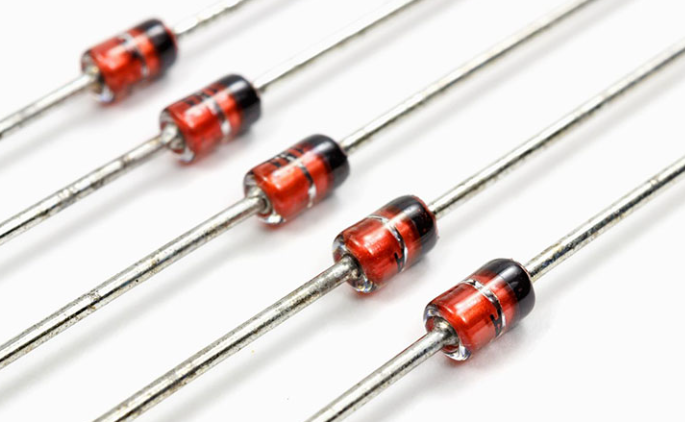OUTLINE:
For Beginners: Electronic Component Identification
 731
731Electronic components play a crucial role in modern electronics. Once you recognize their shapes and markings, you can build anything from a basic LED circuit to a complex robot brain. This quick reference guide will provide you with a simple overview of common electronic components and their identification methods.
Common Types of Electronic Components Identification
Passive Components
Passive components are those that do not require an external power source to function. Here are 3 types of passive components:
Diodes
Diodes are electronic components that allow current to flow in only one direction. They are commonly used for rectification purposes in power supplies, signal processing, and logic circuits.

Resistors
Resistors are used to limit the flow of current in a circuit. These stoppers wear colorful stripes that tell you how much they resist the flow of electricity. The higher the value, the fewer electrons get through! They come in various resistance values and are essential for controlling voltage levels, current flow, and signal attenuation.

Capacitors
Capacitors store and release electrical energy like temporary batteries. They are widely used for energy storage, smoothing voltage fluctuations, filtering signals, and coupling in electronic circuits.

Active Components
Active components are those that require an external power source to function. These are some of active components.
Transistors
Transistors are essential building blocks of modern electronics. These tiny switches act like amplifiers, taking a weak signal and turning it into a much stronger one. They are used in a wide range of applications, including amplifiers, oscillators, and digital logic circuits.

Sensors
Sensors are devices like the eyes and ears of a circuit, detecting and responding to physical stimuli such as light, temperature, pressure, or motion. They convert these stimuli into electrical signals that can be processed by other electronic components.

Integrated Circuit
Integrated circuits, also known as chips or microchips, contain multiple electronic components, such as transistors, resistors, and capacitors, fabricated onto a single semiconductor wafer. They're like miniaturized cities, performing complex tasks like playing music or controlling robots. They are the heart of modern electronic devices and provide complex functionalities in a compact form.

Electronic Component Identification Symbols
Just like letters have shapes and sounds, electronic components have their unique markings and symbols. Each component has a unique symbol on circuit diagrams, representing its function and how it connects to other components. These symbols provide a standardized visual representation, making circuit design and understanding more accessible. It is crucial to familiarize yourself with these symbols to interpret circuit diagrams accurately.

Where to Buy Electronic Components
Online retailers like Digi-Key and Mouser offer a vast selection of components for all your tinkering needs.
Chipsmall is comprised of a skilled staff with an average of more than 19 years of experience in electronic component distribution.
We are based in Hong Kong and have previously built solid and mutually beneficial business partnerships with customers from Europe, America, and South Asia, delivering outdated and hard-to-find components to fulfill their special requirements.
With the principle of "Quality Parts, Customer Priority, Honest Operation and Considerate Service", our business mainly focuses on the distribution of electronic components.
FAQs
1. What information do I need to identify a component
There are several ways to identify an electronic component. The most helpful information includes:
Physical Appearance: Shape, size, color, markings (letters, numbers, symbols) on the body.
Number of Leads: How many pins or connection points does the component have?
Circuit Context: Where is the component located in the circuit? What other components are nearby?
2. How do I interpret the markings on a component
Markings on components can vary depending on the type and manufacturer. Here are some common examples:
Resistors: Color code bands indicate resistance value and tolerance. You'll need a resistor color code chart to decipher them.
Capacitors: Voltage rating and capacitance value might be printed directly.
Transistors: A code or combination of letters and numbers might identify the specific transistor type. Datasheets from the manufacturer can help decode these.
Integrated Circuits (ICs): These often have a part number or logo printed on them. You can search online for the datasheet based on this information.
Conclusion
Mastering electronic component identification is essential for anyone working with electronics. By understanding the common types of components, their functions, and how to interpret circuit symbols, you can gain confidence in circuit design, troubleshooting, and repair. Additionally, knowing where to source electronic components ensures you can find reliable suppliers for your projects.

Disclaimer: The views and opinions expressed by individual authors or forum participants on this website do not represent the views and opinions of Chipsmall, nor do they represent Chipsmall's official policy.

share this blog to:

